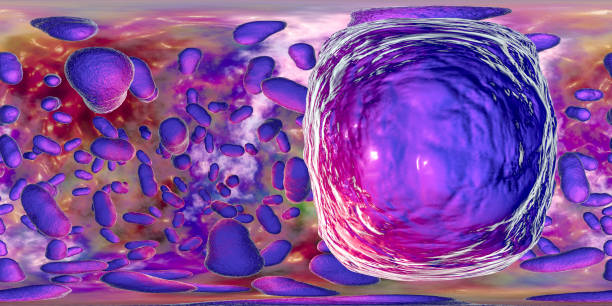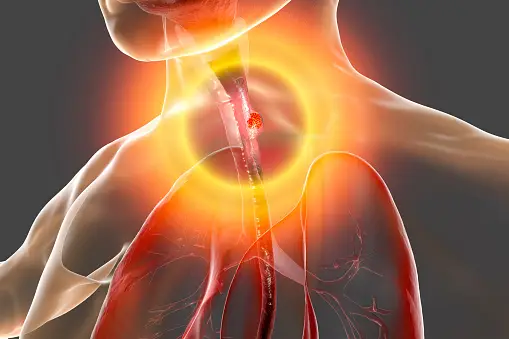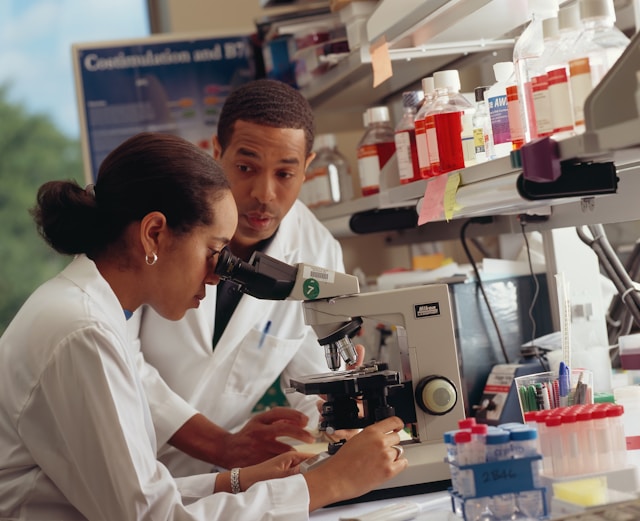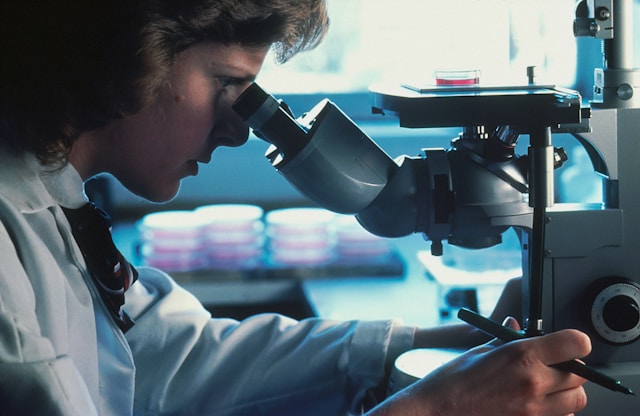Esophageal cancer, a malignant neoplasm of the esophagus, is a formidable disease with a significant impact on global health. The esophagus, a muscular tube connecting the throat to the stomach, plays a crucial role in the digestive system by facilitating the passage of food and liquids. When cancer develops in this vital organ, it often leads to severe health complications and a substantial decrease in quality of life. This type of cancer is categorized primarily into two main types: squamous cell carcinoma, which arises from the flat cells lining the esophagus, and adenocarcinoma, which originates from glandular cells typically found at the junction of the esophagus and stomach.
The incidence of esophageal cancer varies widely across different regions, influenced by a combination of genetic, environmental, and lifestyle factors. Common risk factors include smoking, excessive alcohol consumption, obesity, and gastroesophageal reflux disease (GERD), which can lead to a condition known as Barrett’s esophagus, a precursor to adenocarcinoma. Symptoms often emerge late in the disease’s progression, making early detection and treatment challenging. These symptoms may include difficulty swallowing (dysphagia), unintentional weight loss, chest pain, and persistent cough or hoarseness.
Understanding the etiology, risk factors, and early signs of esophageal cancer is crucial for improving patient outcomes through timely diagnosis and intervention. As research advances, new diagnostic techniques and treatment options are being developed, offering hope for better management and survival rates for those affected by this serious disease. This introduction aims to provide a foundational understanding of esophageal cancer, setting the stage for a more detailed exploration of its causes, symptoms, diagnosis, and treatment options.
Table of Contents
Types of Esophageal Cancer

Esophageal cancer primarily manifests in two major histological forms, each with distinct characteristics, risk factors, and prevalence patterns. These two main types are squamous cell carcinoma and adenocarcinoma. Understanding the differences between these types is crucial for accurate diagnosis and effective treatment.
1. Squamous Cell Carcinoma
Squamous cell carcinoma originates in the squamous cells that line the esophagus. This type of cancer is most commonly found in the upper and middle sections of the esophagus. It has several key characteristics:
- Geographic Prevalence: Squamous cell carcinoma is more prevalent in regions such as Asia and parts of Africa, compared to Western countries.
- Risk Factors: Major risk factors include smoking, heavy alcohol consumption, poor nutritional status, and the consumption of hot beverages. Chronic irritation of the esophagus, such as from achalasia or caustic injury, also increases the risk.
- Demographics: It is more commonly seen in older adults, particularly men.
2. Adenocarcinoma
Adenocarcinoma arises from the glandular cells that are present in the lower part of the esophagus. This type is often associated with Barrett’s esophagus, a condition where the normal squamous lining is replaced by glandular cells due to chronic acid reflux. Key points about adenocarcinoma include:
- Geographic Prevalence: Adenocarcinoma is more common in Western countries, particularly in North America and Europe.
- Risk Factors: Risk factors include chronic gastroesophageal reflux disease (GERD), obesity, smoking, and a diet low in fruits and vegetables. Barrett’s esophagus is a significant precursor to this type of cancer.
- Demographics: It tends to occur more frequently in Caucasian men and is often diagnosed in individuals aged 50 and older.
Other, Rarer Types
While squamous cell carcinoma and adenocarcinoma constitute the majority of esophageal cancer cases, other, less common types can also occur. These include:
- Small Cell Carcinoma: A rare and aggressive form that resembles small cell lung cancer.
- Sarcoma: Arises from the muscle or connective tissue of the esophagus.
- Lymphoma: Involves the lymphatic tissue in the esophagus.
- Melanoma: Extremely rare, originating from pigment-producing cells.
Esophageal cancer encompasses a spectrum of malignancies with squamous cell carcinoma and adenocarcinoma being the most prevalent forms. Each type has distinct etiological factors and epidemiological patterns, influencing their management and prognosis. Awareness of these differences is essential for healthcare providers to develop effective prevention, diagnostic, and treatment strategies tailored to each patient’s specific type of esophageal cancer.
Symptoms of Esophageal Cancer

Esophageal cancer often progresses silently in its early stages, with symptoms becoming more noticeable as the disease advances. Recognizing these symptoms early can be crucial for timely diagnosis and treatment. The following are the primary symptoms associated with esophageal cancer:
1. Difficulty Swallowing (Dysphagia)
- Description: Dysphagia is the most common and often the first symptom of esophageal cancer. Patients may experience a sensation of food being stuck in the throat or chest, which can progressively worsen.
- Progression: Initially, this difficulty may occur with solid foods and, as the tumor grows, can extend to liquids.
2. Unintentional Weight Loss
- Description: Significant and unexplained weight loss is a common symptom. This may result from reduced food intake due to swallowing difficulties or from the cancer itself affecting the body’s metabolism.
- Impact: Weight loss can lead to malnutrition and general weakness.
3. Chest Pain or Discomfort
- Description: Some patients report pain or discomfort in the chest or back, often described as a burning sensation or pressure.
- Cause: This pain can result from the tumor invading nearby tissues or from acid reflux.
4. Persistent Cough or Hoarseness
- Cough: A chronic cough that does not go away may develop if the cancer affects the trachea or other parts of the respiratory system.
- Hoarseness: Hoarseness or changes in the voice can occur if the tumor impacts the nerves that control the vocal cords.
5. Indigestion or Heartburn
- Description: Persistent indigestion or heartburn that does not respond to standard treatments may be a symptom of esophageal cancer.
- Misinterpretation: These symptoms are often mistaken for less serious conditions like GERD, delaying diagnosis.
6. Regurgitation
- Description: Regurgitation of food or saliva may occur, particularly if the esophagus becomes obstructed by the tumor.
- Impact: This can lead to aspiration, where food or liquid enters the lungs, causing pneumonia or other respiratory issues.
7. Pain When Swallowing (Odynophagia)
- Description: Painful swallowing can accompany dysphagia, making eating an uncomfortable or painful experience.
- Location: This pain is usually felt in the chest or back.
8. Hiccups
- Description: Persistent hiccups may occur if the tumor irritates the diaphragm.
The symptoms of esophageal cancer are often nonspecific and can overlap with those of other less severe conditions, which can complicate early diagnosis. Difficulty swallowing, unintentional weight loss, and chest pain are among the more distinctive signs that warrant prompt medical evaluation. Awareness of these symptoms can facilitate earlier detection and improve the chances of successful treatment. If you experience any of these symptoms persistently, it is important to seek medical advice for further evaluation.
Causes of Esophageal Cancer

The development of esophageal cancer is a complex process influenced by a combination of genetic, environmental, and lifestyle factors. While the exact cause of esophageal cancer is not fully understood, several key factors have been identified that increase the risk of developing this disease.
1. Tobacco and Alcohol Use
- Smoking: Tobacco use is one of the most significant risk factors for esophageal cancer, particularly squamous cell carcinoma. The harmful chemicals in tobacco can damage the cells lining the esophagus, leading to cancer.
- Alcohol Consumption: Heavy alcohol consumption also increases the risk, especially when combined with smoking. Alcohol can irritate and inflame the esophageal lining, making it more susceptible to carcinogens in tobacco.
2. Gastroesophageal Reflux Disease (GERD) and Barrett’s Esophagus
- GERD: Chronic acid reflux, or GERD, causes stomach acid to frequently flow back into the esophagus, irritating its lining. Over time, this can lead to changes in the cells of the lower esophagus.
- Barrett’s Esophagus: This condition occurs when the normal squamous cells lining the esophagus are replaced by glandular cells similar to those lining the stomach, a process called metaplasia. Barrett’s esophagus significantly increases the risk of developing adenocarcinoma.
3. Obesity
- Mechanism: Obesity increases the risk of esophageal adenocarcinoma. Excess body weight can lead to increased abdominal pressure, promoting acid reflux and GERD.
- Inflammation: Obesity is associated with chronic inflammation, which can contribute to the development of cancer.
4. Dietary Factors
- Diet: Diets low in fruits and vegetables and high in processed meats have been linked to an increased risk of esophageal cancer. A lack of essential nutrients and antioxidants may reduce the body’s ability to repair damaged cells.
- Hot Beverages: Consuming very hot beverages can damage the lining of the esophagus, increasing the risk of squamous cell carcinoma.
5. Genetic Factors
- Family History: A family history of esophageal cancer can increase an individual’s risk, suggesting a genetic predisposition.
- Genetic Mutations: Certain genetic mutations and inherited conditions, such as tylosis (a rare genetic disorder), can increase the risk of esophageal cancer.
6. Environmental Exposures
- Carcinogens: Exposure to certain chemicals and environmental toxins can increase the risk of esophageal cancer. For example, exposure to certain chemicals in the workplace may be a risk factor.
- Radiation: Previous radiation treatment to the chest or upper abdomen can increase the risk of esophageal cancer.
7. Infections
- Human Papillomavirus (HPV): Some studies suggest that HPV infection may be linked to esophageal squamous cell carcinoma, although this association is less clear than with other cancers like cervical cancer.
Esophageal cancer is a multifactorial disease with several established risk factors, including tobacco and alcohol use, chronic acid reflux, obesity, dietary habits, genetic predisposition, and environmental exposures. Understanding these causes can aid in the development of prevention strategies and early detection methods. Reducing exposure to known risk factors, adopting a healthy lifestyle, and monitoring for symptoms in high-risk individuals are crucial steps in mitigating the risk of esophageal cancer.
Inherited Gene Mutations and Esophageal Cancer
While most cases of esophageal cancer are sporadic, some inherited gene mutations can increase an individual’s susceptibility to this disease. These genetic mutations can be passed from one generation to the next, contributing to a familial risk of esophageal cancer. Here are some key inherited genetic conditions and mutations associated with an increased risk of developing esophageal cancer:
1. Tylosis
- Overview: Tylosis is a rare inherited condition characterized by thickening of the skin on the palms of the hands and soles of the feet (hyperkeratosis).
- Genetics: It is caused by mutations in the RHBDF2 gene.
- Cancer Risk: Individuals with tylosis have a significantly increased risk of developing squamous cell carcinoma of the esophagus.
2. Familial Barrett’s Esophagus
- Overview: Barrett’s esophagus is a condition in which the lining of the esophagus changes to resemble the lining of the intestine, often due to chronic GERD.
- Genetics: Familial Barrett’s esophagus suggests a genetic predisposition, though specific genes involved are not well-defined.
- Cancer Risk: Those with Barrett’s esophagus have an increased risk of esophageal adenocarcinoma, and a family history further elevates this risk.
3. Plummer-Vinson Syndrome
- Overview: This rare disorder is characterized by iron deficiency anemia, difficulty swallowing, and esophageal webs.
- Genetics: The genetic basis is not fully understood, but it may have an inherited component.
- Cancer Risk: Individuals with Plummer-Vinson syndrome have an elevated risk of developing squamous cell carcinoma of the esophagus.
4. Fanconi Anemia
- Overview: Fanconi anemia is a rare inherited disorder that leads to bone marrow failure and increases the risk of various cancers.
- Genetics: It is caused by mutations in one of several genes responsible for DNA repair.
- Cancer Risk: Individuals with Fanconi anemia have a higher risk of developing esophageal cancer, among other cancers.
5. Bloom Syndrome
- Overview: Bloom syndrome is a rare genetic disorder characterized by short stature, skin sensitivity to sunlight, and an increased risk of cancer.
- Genetics: It is caused by mutations in the BLM gene, which plays a role in DNA repair.
- Cancer Risk: People with Bloom syndrome have an elevated risk of various cancers, including esophageal cancer.
6. Hereditary Nonpolyposis Colorectal Cancer (HNPCC or Lynch Syndrome)
- Overview: Lynch syndrome is an inherited condition that increases the risk of several types of cancer, particularly colorectal cancer.
- Genetics: It is caused by mutations in mismatch repair genes such as MLH1, MSH2, MSH6, and PMS2.
- Cancer Risk: While more commonly associated with colorectal and endometrial cancers, Lynch syndrome also increases the risk of esophageal cancer.
Inherited gene mutations play a significant role in a small percentage of esophageal cancer cases. Conditions such as tylosis, familial Barrett’s esophagus, Plummer-Vinson syndrome, Fanconi anemia, Bloom syndrome, and Lynch syndrome illustrate the genetic factors that can predispose individuals to this disease. Awareness of these inherited conditions can aid in early detection and preventive measures for at-risk individuals. Genetic counseling and testing are recommended for individuals with a family history of these syndromes to better understand their risk and to implement appropriate monitoring and preventive strategies.
Diagnosis of Esophageal Cancer

Diagnosing esophageal cancer involves a series of steps and tests designed to confirm the presence of cancer, determine its type, and establish its stage. Early detection is crucial for improving treatment outcomes and survival rates. Here is an overview of the diagnostic process for esophageal cancer:
1. Medical History and Physical Examination
- Medical History: The physician will take a detailed medical history, including any symptoms such as difficulty swallowing, weight loss, chest pain, or persistent cough. The history will also cover risk factors like smoking, alcohol use, and family history of cancer.
- Physical Examination: A physical exam may be conducted to check for signs of cancer or other related conditions.
2. Endoscopy
- Upper Endoscopy (Esophagogastroduodenoscopy, EGD): This is the primary diagnostic tool for esophageal cancer. During this procedure, a thin, flexible tube with a light and camera (endoscope) is inserted through the mouth into the esophagus.
- Purpose: It allows direct visualization of the esophagus, stomach, and upper part of the small intestine. Any abnormal areas can be identified, and tissue samples (biopsies) can be taken for further analysis.
3. Biopsy
- Procedure: If abnormalities are found during the endoscopy, a biopsy will be performed. This involves taking small samples of tissue from the esophagus to be examined under a microscope by a pathologist.
- Confirmation: A biopsy is essential for confirming the presence of cancer cells and determining the specific type of esophageal cancer (e.g., squamous cell carcinoma or adenocarcinoma).
4. Imaging Tests
- Barium Swallow (Esophagram): In this test, the patient swallows a barium solution, which coats the lining of the esophagus and makes it visible on X-rays. It helps identify structural abnormalities and blockages.
- Computed Tomography (CT) Scan: CT scans provide detailed cross-sectional images of the body and can help determine the extent of the cancer, including whether it has spread to nearby organs or lymph nodes.
- Positron Emission Tomography (PET) Scan: PET scans involve injecting a small amount of radioactive sugar into the body. Cancer cells absorb more of the sugar, and the scan highlights these areas, helping to detect metastasis.
- Endoscopic Ultrasound (EUS): EUS combines endoscopy and ultrasound to obtain detailed images of the esophageal wall and surrounding tissues. It is particularly useful for determining the depth of tumor invasion and involvement of nearby lymph nodes.
5. Staging
- Staging Purpose: Determining the stage of esophageal cancer is crucial for planning treatment. Staging describes the extent of cancer in the body and is typically done using the TNM system (Tumor, Node, Metastasis).
- Staging Methods: In addition to the imaging tests mentioned, staging may involve bronchoscopy (to check for spread to the airways) and laparoscopy (to examine the abdomen for metastasis).
6. Molecular and Genetic Testing
- Purpose: These tests can identify specific genetic mutations or molecular characteristics of the cancer, which may influence treatment decisions. For instance, testing for HER2 overexpression can determine eligibility for targeted therapies.
The diagnosis of esophageal cancer involves a combination of medical history, physical examination, endoscopy with biopsy, and various imaging tests to confirm the presence of cancer, determine its type, and establish its stage. Early detection through these diagnostic methods is crucial for improving the chances of successful treatment and better outcomes for patients. If you experience persistent symptoms or have risk factors for esophageal cancer, it is important to seek medical evaluation promptly.
Treatments for Esophageal Cancer

The treatment of esophageal cancer depends on several factors, including the stage and location of the cancer, the patient’s overall health, and personal preferences. Treatment strategies often involve a combination of therapies aimed at removing or controlling the cancer and managing symptoms. Here is an overview of the primary treatment options for esophageal cancer:
1. Surgery
Surgery is a common treatment for esophageal cancer, especially in its early stages. The goal is to remove the cancerous tissue and, if possible, a margin of healthy tissue around it.
- Esophagectomy: This is the most common surgical procedure for esophageal cancer. It involves removing part or all of the esophagus and possibly some of the surrounding tissue. The remaining esophagus is then reconnected to the stomach.
- Esophagogastrectomy: This procedure involves removing part of the esophagus and the upper part of the stomach. The remaining stomach is then pulled up and connected to the remaining esophagus.
2. Radiation Therapy
Radiation therapy uses high-energy beams, such as X-rays, to kill cancer cells. It can be used alone or in combination with other treatments.
- External Beam Radiation Therapy (EBRT): This is the most common type of radiation therapy, where radiation is delivered from a machine outside the body.
- Brachytherapy: This involves placing a radioactive source inside the esophagus near the cancer. It is less commonly used but can be effective in certain cases.
3. Chemotherapy
Chemotherapy involves using drugs to kill cancer cells or stop them from growing. It can be administered before surgery (neoadjuvant therapy) to shrink the tumor or after surgery (adjuvant therapy) to kill any remaining cancer cells.
- Common Chemotherapy Drugs: These include cisplatin, 5-fluorouracil (5-FU), carboplatin, and paclitaxel. Chemotherapy is often used in combination with radiation therapy (chemoradiation).
4. Targeted Therapy
Targeted therapy uses drugs designed to target specific molecules involved in the growth and spread of cancer cells.
- Trastuzumab (Herceptin): This drug targets the HER2 protein, which is overexpressed in some esophageal cancers. It is used in combination with chemotherapy for HER2-positive cancers.
- Ramucirumab (Cyramza): This drug targets VEGF receptors involved in blood vessel growth and is used for advanced or metastatic esophageal cancer.
5. Immunotherapy
Immunotherapy helps the body’s immune system recognize and attack cancer cells.
- Pembrolizumab (Keytruda): This drug is a PD-1 inhibitor used for advanced esophageal cancer that expresses PD-L1.
- Nivolumab (Opdivo): Another PD-1 inhibitor used for treating certain types of advanced esophageal cancer.
6. Endoscopic Treatments
Endoscopic treatments are less invasive and are often used for early-stage cancers or for palliative care to relieve symptoms.
- Endoscopic Mucosal Resection (EMR): This procedure involves removing superficial cancer and precancerous tissue using an endoscope.
- Endoscopic Submucosal Dissection (ESD): A more advanced procedure than EMR, ESD involves removing deeper layers of the esophageal lining.
7. Supportive (Palliative) Care
Palliative care focuses on relieving symptoms and improving quality of life for patients with advanced esophageal cancer.
- Stent Placement: A stent can be placed in the esophagus to keep it open and allow food and liquids to pass through.
- Laser Therapy: Lasers can be used to remove obstructions in the esophagus.
- Nutritional Support: Nutritional therapy, including feeding tubes, can help ensure adequate nutrition if swallowing becomes difficult.
The treatment of esophageal cancer is multifaceted, involving surgery, radiation therapy, chemotherapy, targeted therapy, immunotherapy, and endoscopic treatments. The choice of treatment depends on the stage and location of the cancer, as well as the patient’s overall health and preferences. In many cases, a combination of treatments is used to achieve the best possible outcomes. Early diagnosis and a tailored treatment plan are critical for improving the prognosis and quality of life for individuals with esophageal cancer. If you or a loved one is facing esophageal cancer, it is important to discuss all available treatment options with a healthcare provider to determine the best course of action.
Prevention of Esophageal Cancer

Preventing esophageal cancer involves addressing modifiable risk factors and adopting healthy lifestyle practices. While some risk factors, such as genetic predispositions, cannot be changed, many strategies can significantly reduce the risk of developing esophageal cancer. Here are key preventive measures:
1. Avoid Tobacco and Limit Alcohol Consumption
- Quit Smoking: Smoking is a major risk factor for esophageal cancer, especially squamous cell carcinoma. Quitting smoking can significantly reduce this risk.
- Limit Alcohol Intake: Excessive alcohol consumption increases the risk of esophageal cancer. Limiting alcohol intake can help lower this risk, especially when combined with quitting smoking.
2. Manage Gastroesophageal Reflux Disease (GERD)
- Treat GERD: Chronic acid reflux can lead to Barrett’s esophagus, a precursor to esophageal adenocarcinoma. Managing GERD through lifestyle changes and medications can help reduce this risk.
- Medications: Proton pump inhibitors (PPIs) and H2 receptor blockers can reduce stomach acid production and help manage GERD.
3. Maintain a Healthy Diet and Weight
- Healthy Diet: A diet rich in fruits, vegetables, and whole grains can lower the risk of esophageal cancer. These foods are high in antioxidants, vitamins, and minerals that protect against cancer.
- Avoid Processed Foods: Limiting the intake of processed and red meats can also help reduce cancer risk.
- Healthy Weight: Obesity is a significant risk factor for esophageal adenocarcinoma. Maintaining a healthy weight through diet and exercise can reduce this risk.
4. Regular Physical Activity
- Exercise: Regular physical activity helps maintain a healthy weight and can reduce the risk of esophageal cancer. Aim for at least 150 minutes of moderate-intensity exercise per week.
5. Avoid Hot Beverages
- Temperature: Drinking very hot beverages can damage the lining of the esophagus and increase the risk of squamous cell carcinoma. Allow hot drinks to cool before consumption.
6. Limit Exposure to Environmental Toxins
- Chemicals: Reduce exposure to harmful chemicals and toxins in the workplace and environment. Follow safety guidelines to minimize risk.
7. Screening and Monitoring
- High-Risk Individuals: Those with a family history of esophageal cancer or conditions like Barrett’s esophagus should undergo regular screening and monitoring. Endoscopic surveillance can help detect precancerous changes early.
- Barrett’s Esophagus: Individuals with Barrett’s esophagus should follow their doctor’s recommendations for regular endoscopic exams to monitor for any signs of progression to cancer.
8. Genetic Counseling and Testing
- Family History: If you have a family history of esophageal cancer or related genetic conditions, consider genetic counseling. Testing for inherited gene mutations can help assess risk and guide preventive measures.
9. Avoid Caustic Injury
- Chemical Exposure: Take precautions to avoid ingesting caustic substances that can damage the esophagus, such as strong acids and bases used in cleaning products.
Preventing esophageal cancer involves a combination of lifestyle changes, medical management, and regular screening for those at higher risk. Avoiding tobacco and excessive alcohol consumption, maintaining a healthy diet and weight, managing GERD, and reducing exposure to environmental toxins are critical steps in reducing the risk of esophageal cancer. For individuals with high-risk factors, regular monitoring and genetic counseling can aid in early detection and prevention. By adopting these preventive measures, individuals can significantly lower their chances of developing esophageal cancer and improve their overall health.
Comorbid Conditions Associated with Esophageal Cancer

Patients with esophageal cancer often present with comorbid conditions that can complicate diagnosis, treatment, and prognosis. These comorbidities can be related to lifestyle factors, underlying health issues, or the direct effects of the cancer itself. Here are some of the most common comorbid conditions associated with esophageal cancer:
1. Gastroesophageal Reflux Disease (GERD)
- Description: GERD is a chronic condition where stomach acid frequently flows back into the esophagus, causing irritation and inflammation.
- Relation to Esophageal Cancer: GERD is a significant risk factor for esophageal adenocarcinoma. Chronic reflux can lead to Barrett’s esophagus, a precancerous condition that increases cancer risk.
2. Barrett’s Esophagus
- Description: Barrett’s esophagus is a condition in which the normal squamous cells lining the esophagus are replaced by columnar cells, typically due to chronic acid reflux.
- Cancer Risk: This condition significantly increases the risk of developing esophageal adenocarcinoma.
3. Obesity
- Description: Obesity is characterized by excessive body fat and is associated with various health issues.
- Relation to Esophageal Cancer: Obesity increases the risk of esophageal adenocarcinoma, partly due to increased instances of GERD and the chronic inflammation associated with excess weight.
4. Alcoholism
- Description: Alcoholism is a chronic disease characterized by an inability to control alcohol consumption.
- Cancer Risk: Chronic heavy alcohol use is a major risk factor for esophageal squamous cell carcinoma. It also contributes to nutritional deficiencies that can impair overall health.
5. Smoking
- Description: Smoking involves inhaling tobacco smoke, which contains numerous carcinogens.
- Relation to Esophageal Cancer: Smoking is a leading risk factor for both squamous cell carcinoma and adenocarcinoma of the esophagus.
6. Diabetes Mellitus
- Description: Diabetes mellitus is a chronic condition characterized by high blood sugar levels due to insulin resistance or deficiency.
- Cancer Risk: Some studies suggest that diabetes may increase the risk of esophageal cancer, possibly due to chronic inflammation and other metabolic disturbances associated with the disease.
7. Chronic Obstructive Pulmonary Disease (COPD)
- Description: COPD is a group of lung diseases that cause obstructed airflow and breathing difficulties.
- Relation to Cancer: The presence of COPD can complicate the management and treatment of esophageal cancer, particularly surgery and radiation therapy, due to compromised lung function.
8. Cardiovascular Disease
- Description: Cardiovascular diseases include conditions like hypertension, coronary artery disease, and heart failure.
- Impact on Treatment: These conditions can affect the patient’s ability to undergo certain treatments, such as surgery or chemotherapy, and can impact overall prognosis.
9. Nutritional Deficiencies
- Description: Nutritional deficiencies can result from poor diet, malabsorption, or the effects of chronic illness.
- Cancer Impact: Esophageal cancer can exacerbate nutritional deficiencies due to difficulty swallowing and reduced food intake, leading to weight loss and weakened immune function.
10. Psychological Conditions
- Depression and Anxiety: The diagnosis and treatment of esophageal cancer can lead to significant psychological distress, including depression and anxiety.
- Impact on Treatment: These conditions can affect treatment adherence and overall quality of life, making comprehensive care and support essential.
Esophageal cancer often occurs alongside various comorbid conditions, including GERD, Barrett’s esophagus, obesity, alcoholism, smoking-related diseases, diabetes, COPD, cardiovascular diseases, nutritional deficiencies, and psychological conditions. Managing these comorbidities is crucial for optimizing treatment outcomes and improving the overall quality of life for patients. A multidisciplinary approach involving oncologists, primary care physicians, dietitians, and mental health professionals is essential for addressing the complex needs of patients with esophageal cancer and its associated comorbidities.
Living with Esophageal Cancer

Living with esophageal cancer poses numerous physical, emotional, and practical challenges for patients and their families. Coping strategies, supportive care, and lifestyle adjustments are crucial for managing these challenges and improving the quality of life. Here is an overview of key aspects of living with esophageal cancer:
1. Medical Management and Follow-Up Care
- Regular Monitoring: Continuous follow-up appointments with oncologists and healthcare providers are essential to monitor the patient’s response to treatment, detect any recurrence, and manage side effects.
- Medications: Patients may need medications to manage pain, nausea, acid reflux, and other symptoms associated with esophageal cancer and its treatment.
2. Nutritional Support
- Dietary Adjustments: Difficulty swallowing (dysphagia) is common, requiring patients to adapt their diets. Soft foods, pureed foods, and high-calorie nutritional supplements can help maintain adequate nutrition.
- Feeding Tubes: In severe cases, patients may need a feeding tube (either nasogastric or percutaneous endoscopic gastrostomy) to ensure they receive sufficient nutrients.
3. Physical Activity and Rehabilitation
- Exercise: Light to moderate exercise can help maintain strength, improve mood, and reduce fatigue. Patients should consult their healthcare provider before starting any exercise program.
- Physical Therapy: Physical therapy can assist with regaining strength and mobility, especially after surgery.
4. Emotional and Psychological Support
- Counseling and Therapy: Psychological support, including counseling and therapy, can help patients and their families cope with the emotional impact of cancer. Support groups can provide a sense of community and shared experience.
- Stress Management: Techniques such as mindfulness, meditation, and relaxation exercises can help manage stress and anxiety.
5. Symptom Management
- Pain Control: Effective pain management is crucial. This may involve medications, nerve blocks, or other interventions as prescribed by a pain specialist.
- Managing Dysphagia: Techniques such as eating smaller, more frequent meals and avoiding foods that cause discomfort can help manage swallowing difficulties.
6. Palliative Care
- Comprehensive Support: Palliative care focuses on improving the quality of life by managing symptoms and providing psychological, social, and spiritual support. It can be provided alongside curative treatment or as the main focus of care for advanced cancer.
- Symptom Relief: Palliative care teams work to relieve symptoms such as pain, difficulty swallowing, nausea, and fatigue.
7. Practical Considerations
- Advance Care Planning: Patients should consider advance directives and discuss their wishes regarding end-of-life care with their families and healthcare providers.
- Financial Planning: Navigating the financial aspects of cancer treatment, including insurance, medical bills, and potential loss of income, is crucial. Social workers and financial counselors can provide assistance.
8. Family and Caregiver Support
- Involvement: Family members and caregivers play a vital role in providing emotional and practical support. Ensuring they have access to resources and support is important for their well-being.
- Education: Educating family members and caregivers about the disease, treatment options, and caregiving strategies can improve the overall care experience.
Living with esophageal cancer requires a comprehensive approach that addresses medical, nutritional, physical, emotional, and practical needs. Regular medical follow-up, nutritional support, physical activity, and symptom management are essential components of care. Emotional and psychological support, palliative care, and practical considerations also play crucial roles in enhancing the quality of life for patients and their families. By leveraging available resources and support systems, individuals living with esophageal cancer can better navigate the challenges of the disease and maintain a higher quality of life.
